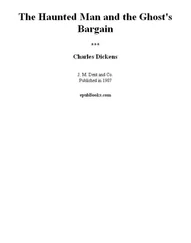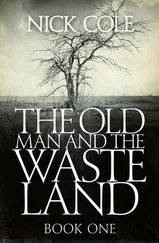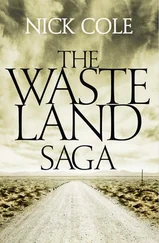The book was prompted by a certain symmetry I noticed in 1979 in some published plans of excavations made on the site of a Bronze Age burial mound at Harenermolen in the northern Netherlands. (The monument in question is discussed and illustrated in Chapter 7below.) When built, that mound had been surrounded by rings of wooden posts that had of course rotted away millennia before the excavation performed by A. E. van Giffen in the 1920s. As at many other comparable sites, he and others have been able to chart the traces of the original posts with considerable accuracy, through the discoloration of the sandy soil. It soon became clear that when such rings of posts were erected they were placed with reference to the rising and setting of the Sun and Moon at critical times and seasons. A similar claim has often been made for many of the stone circles, but the positioning of the timber posts seemed to offer more reliable evidence as to precisely how the Sun and Moon had been observed.
Using the key astronomical ideas that emerged in this way, it was natural enough to try to apply them to the much earlier Aubrey holes at Stonehenge, and to timber monuments at Woodhenge, Mount Pleasant, and elsewhere. Doing so led me in turn to consider the potential astronomical implications of the much earlier English long barrows, tombs roughly similar in form to others in various regions of Neolithic northern Europe. Many of them seemed to indicate that the stars, rather than the Sun and Moon, were for their builders the prime focus of religious attention. Needless to say, the order of the book is more or less the reverse of that of my search, and begins with the long barrows. The path to Stonehenge is well trodden, although usually more direct.
The direction of the argument as presented here might disturb the casual archaeological reader, with eye trained to find the nub of the argument by looking for histograms and comparable statistical tools of evaluation. They could have added little of value, and they are certainly not the only valid way of assessing an argument. Like most archaeological reconstructions of the past, mine follows a perfectly conventional method. It puts forward a series of hypotheses about past human actions, and it tries to determine which of them best survive attempts to refute them in the light of the evidence. The evidence in question concerns not only the excavation but what is humanly possible and humanly probable. Those last two factors are all too often left out of the equation, but they play an important part in the initial search for alternative hypotheses. A rigorous search for alternatives is often far more important than a blinkered analysis of only one. To take a simple example: the existence of large temples as evidence for the organization of society into chiefdoms (the positive argument for the fact that large numbers of people can be controlled efficiently in chiefdoms is irrelevant for the moment) is worthless if one cannot rule out all the engineering possibilities for building such temples with small groups of people. And to take an astronomical example: a typical histogram of notable celestial events to which a monument seems to point is worthless if only one observing position and only one technique are considered, and viable alternatives are ignored. Open-mindedness as to alternatives is a much harder lesson to learn than statistics.
How this general method will work out in practice may be illustrated in regard to the long barrows, the subject of a long chapter in which the pattern might easily be overlooked. At an early stage the hypothesis is made that the very brightest stars were observed rising and setting over the barrows, and this according to a series of very simple but precise rules, at which the barrow architecture seems to hint. Making that assumption, the barrows can be reasonably precisely dated, even without evidence of a scientifically high quality. These dates fit well with radiocarbon dates (which are occasionally used to help select alternatives, but not to refine them after the initial stage). A single instance is not compelling, but statistically the argument is strengthened by the fact that this can be done in several independent ways at a single barrow, and the dates usually then hang together well. (The evidence for this is evaluated in passing, for example, at pp. 45, 52-3, 79-80, but more especially at pp.) What is more, the case is strengthened when it is found that the same procedure gives acceptable results at all the barrows examined; and that the same fundamental principles can be readily extended to other monuments, such as chalk figures and causewayed enclosures. A thousand instances might give the reader more satisfaction than a dozen, depending on the mentality of the reader, but the evidence from even a few is compelling. And there are other respects in which this is so.
I am referring here to the way some hypotheses have of leading up to unsuspected situations. In the case of the long barrows, for example, it comes as a surprise to find that, accepting our starting point, it turns out that there were strong preferences for certain simple gradients—for example, one in five and one in ten—in the angles of observation set by the barrows. These gradients conform with the known architecture of the barrows, also often in unexpected ways, and the same simple gradients even turn up on critical ridges of the landscape on which later monuments were placed. There are other unexpected shared elements to be found in monumental design, and a fair-minded reader will admit that they are at least as objective as many other archaeological constructs—for instance, the common social structures held to be discernible on the basis of monumental building techniques in widely separated cultures. (Perhaps they are even more so, since those of the first sort were quite unexpected while those of the second often owe as much to Max Weber and Émile Durkheim as to mounds of earth.) Just as unexpected is another finding of ours, namely that the long barrows fall into regions in which they are aligned on the landscape in groups of three or more. This cannot be explained by chance, and it is therefore of enormous value to our general thesis that the very stars that seem to have been the focus of attention at the long barrows were evidently used to align the barrows on the landscape over great distances (pp). Of course it may be that there is a better archaeological explanation than mine for those extraordinary alignments of barrows—ley lines of cultural stress, perhaps—but I doubt it.
There have been numerous attempts to interpret the Stonehenge monument in astronomical terms, and what has been said of tacit presuppositions in archaeology was never truer than there. One of the greatest of omissions has been to ignore potential observing techniques almost totally, and to imagine that an observer stood in some position that was only roughly defined, ‘near such and such a stone’. Rules of a much more exact kind are offered here. Of course they may be wrong, but since assuming them leads to a much more precise fit with astronomical data than those offered previously, the rules of evidence require us to accept them until something better is suggested. Some of the earlier astronomical interpretations of Stonehenge, dating from the seventeenth century, are sketched in Chapter 7. Archaeologists as a whole remain quite properly sceptical about most of them—in fact they are usually prepared to accept only the approximate alignment of the Heel Stone on sunrise at the summer solstice. They have had good reason to resist the astronomical hypothesis, in view of the fact that hardly a single really precise line of sight has hitherto been found, but they have not been sceptical enough, for even that old favourite, the line to the Sun at summer solstice, is a very sorry specimen that has been quite misunderstood. Stonehenge was indeed built to an astronomical design, or rather succession of designs, but all of them were much more ingenious than has previously been recognized. (The real test of honest druids hereafter will be their readiness to face the elements on Salisbury Plain in midwinter. Since Stonehenge is now seriously outdated, the most honest of all will learn the necessary techniques from the pages that follow, and build another temple far away from it.)
Читать дальше











